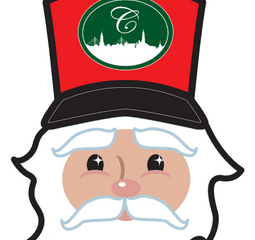Uncategorized
How To Design Printed Circuit Board For Any Device By Yourself?
All the modern electronic devices work properly. But have you ever thought about why it happens? The secret is its heart — Printed Circuit Board (PCB) represented by a piece of flat plastic with many components. Manufacturing PCB takes lots of effort and stages to get the final product, including electronic hardware design, but here, you will find out how the PCB works and how to design it for any device on your own. So let’s go!
What Is PCB?
A PCB consists of layers of copper foil and insulating material, which are then laminated. Such a sandwich can’t do anything on its own. However, it plays the role of the base where electrical and electronic components are connected and fastened. Together they breathe life into any device. But first, a PCB needs some maintenance before it is installed in a gadget.
So the first step to creating a PCB is brainstorming what components you will need, and of course, it depends on what functions this device will perform. A designing process involves planning components’ layouts taking into account their physical dimensions and how they should be connected. Consequently, planning the tracks, vias, pads layout so the result should be correct work of the whole device. The final step is etching the tracks and soldering the components onto the board.
There are a few types of PCBs: one-sided, double-sided, one-layered, and multi-layered. One-sided PCB means that only one side of the board can be etched and accommodate the components, while double-sided has two working sides. One-layered PCB refers to having only one copper foil layer, while multi-layered PCB has more than one copper foil layer. The latter type is admitted as more impractical since such boards are always bigger because of the high density of components.
The PCB is not the only way to make a device work. Some alternatives such as wire wrap and point-to-point solutions are still used, but not as often as PCBs. Besides, these solutions may not be proper for some instances because of their dimensions or inabilities to perform particular tasks.
5 Things You Should Know Before Designing Printed Circuit Board
Before proceeding with designing PCB, you should know some basic rules that you should keep in your mind:
- You should consider every PCB design as an art object. It means that there is no same design as yours, so there are no wrong or right ways to do it, unlike the schematic design. The latter means that every component and track are made according to the mathematical laws only, so they can’t be installed in other places.
- Don’t forget about the rules of the component’s layout. In particular, make sure that components such as resistors and LEDs are set in the correct order and match the current direction; otherwise, they may fuse. Besides, mind that all of these components have different sizes, so when the ready board goes to the soldering oven, the bigger elements may block the smaller ones that won’t be soldered properly.
- Always place the components with enough space around them, still keep them as close as possible to each other. Otherwise, you may lack space at the end of the route, and you may need to redo the same process from the very beginning.
- If you don’t have enough space on one side of the PCB, you can set the components on the other but avoid overlapping.
- The 100% successfully designed PCB consists of 90% correct component placement and 10% of routing. Once all the components are set in the right place, the routing process shouldn’t take a long time.
How To Design PCB On My Own?
- Think about the circuit
Once you decide to create PCB by yourself, you need to choose the circuit. You can select the most matching circuit diagram on the internet or create your own. If this is your first PCB design, then it’s better to start with the simplest circuit, then, after practicing, jump to more complicated ones.
2. Draw the schematics of the circuit
Drawing the schematics is better to do with special software. Luckily, there are lots of them on the internet, including free ones. The best thing is that they usually have Electrical Rules checking feature that shows the errors that users often miss.
3. Designing PCB layout
This step involves transferring your schematic diagram into a PCB drawing. Of course, it’s better to do with the same software. However, the important thing at this stage is deciding the type of footprint: through-hole or surface-mount. The latter may not be easy to do for beginners, so if this is your first try, it is better to choose the through-hole components since they are easy to solder. Once you finish, run the design checker in your program to see whether there are some errors.
4. Making PCB
As soon as you have the PCB design, you can start etching the tracks by yourself. However, if you are not familiar with how to do it, you can ask third parties to do it. It’s not expensive at all and takes a little time.
5. Preparing components
While your PCB is getting ready, you can order the necessary components.
6. Assembling
Once the PCB is in your hands, the components have arrived already, you can proceed with assembling all the parts. Of course, the components won’t sit securely without a special bond. That is why you will need a soldering tool that connects and fastens all the details. It’s better to solder by checking with the previously made design, so don’t forget to print in advance.
If you design your PCB for the first time, you should know that it may take a long time and effort to start designing complicated circuits. Besides, you may require purchasing special tools and software. But if you need to do this only one time or need mass production, then it’s not necessary to do it by yourself. Axonim company has a proven track record of PCB design so that it can do it for you, too.
























